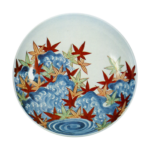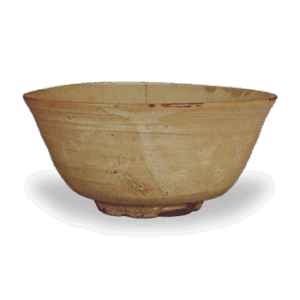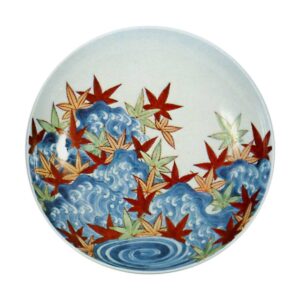
Diameter 19.7 cm Hakone Art Museum
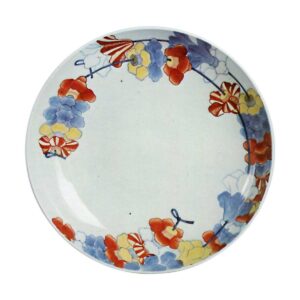
Diameter 20.4 cm
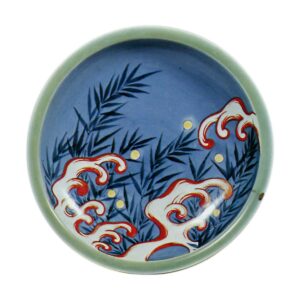
Diameter 20.4 cm
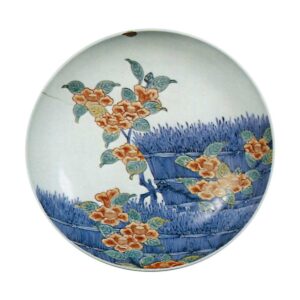
Diameter 20.2 cm Okayama Art Museum
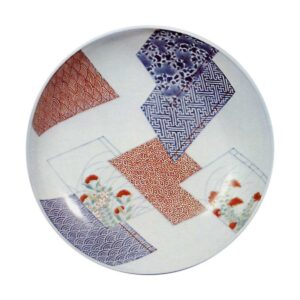
Diameter 20.2 cm
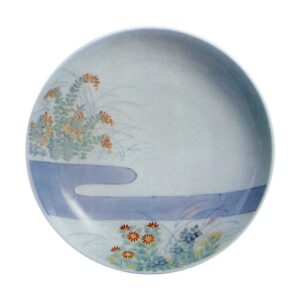
Diameter 19.5 cm
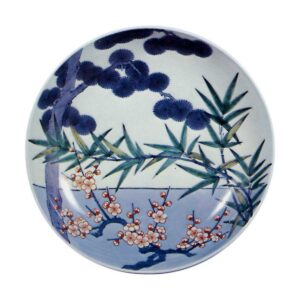
Diameter 20.4 cm
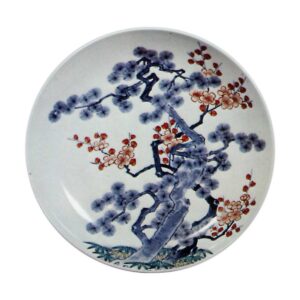
Diameter 20.0 cm
These are also Nabeshima wares produced from the Genroku to Kyoho periods. Among them, the dish with a reeded wave-head design with a celadon border and the expected wave-head and fireflies in the reeds is a rare design rarely seen in Japan. The camellia and hedge design on the plate is unique in its form and also unusual in its design. The “Matsu, bamboo, and plum” plates with a pine, bamboo, and plum design were once a set of ten plates, and were housed in a box dated to the Kyoho era (1868). It is therefore a valuable source for estimating Nabeshima in overglaze enamels from the Kyoho period. The workmanship is of high quality, but the arrangement of the patterns is a little clumsy. The camellia-shibagaki pattern dish has a peony arabesque design, and the comb patterns on the base are short and uneven, and the brushwork is rough and the shape of the dish is distorted into an ellipse. The dish with a cloisonne design is also decorated with a comb-shaped base. The plate with an autumn grass design is decorated with a magnolia design and a combed base, but the overall coloring is light. The dish with a pine, bamboo, and plum design is decorated with a peony arabesque design with a stretched leaf tip and a comb-over base. The plate with a pine, bamboo, and plum design is unusual in that it is painted on the reverse of an Iro-nabeshima dish, with a rose branch design and red and yellow overglaze pigments applied to the flowers. This type of back-painting is unprecedented.

